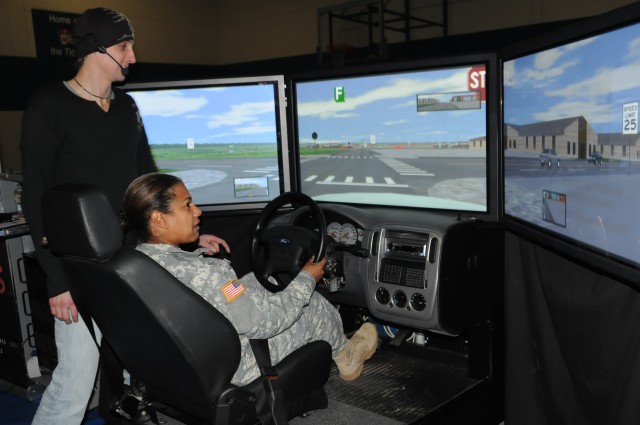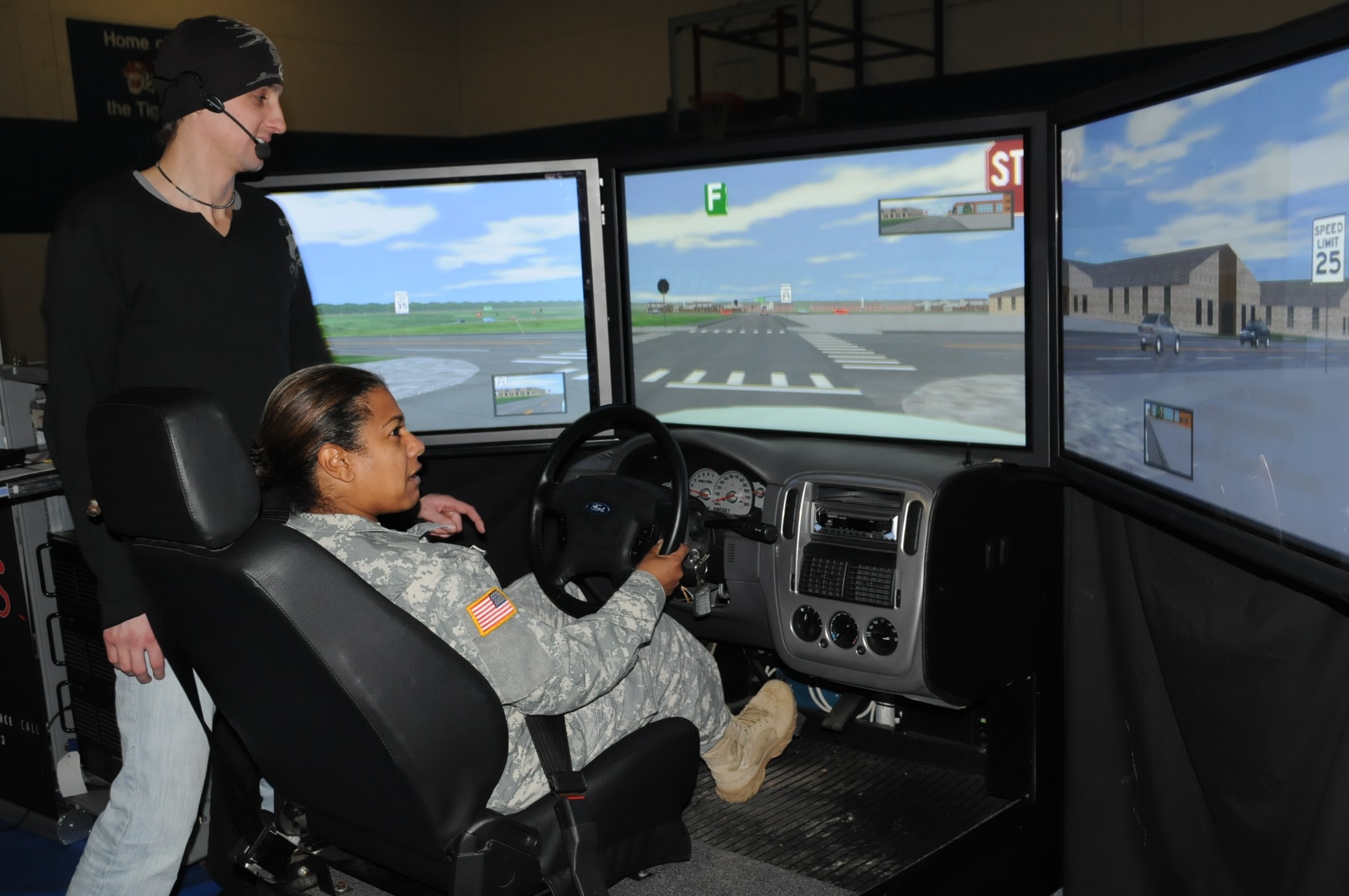
HOHENFELS, Germany - It is no secret that drunk driving claims thousands of lives each year. Every driver knows the danger yet many continue to do it anyway, risking not just their lives but those of everyone else on the road as well.
"It won't happen to me," they say, but alcohol physically alters everyone's ability to operate a car, no matter how many times someone insists, "I'm fine."
To prove that point, the Alcohol and Substance Abuse Program invited the Save a Life Tour and its hands-on drunk driving simulator to visit Soldiers at locations throughout Europe. A touring educational program with young, casual presenters, SALT presents yet another reason for drivers to stay away from alcohol and take the keys from anyone who does not.
"I use a peer approach instead of lecturing them. I've done it all so it's not like I'm lecturing, but I can explain the seriousness of learning the consequences (of drunk driving) through a death, not a DUI or an arrest," said Chris Geysbeck, one of the SALT presenters who came to U.S. Army Garrison Hohenfels in late November. Geysbeck said he learned those consequences when a drunk driver killed his best friend.
The presentation begins with a graphic video showing original footage of fatal drunk driving accidents and testimonials from those who, like Geysbeck, have lost a loved one.
As gruesome as the images are and as heartbreaking as the testimonials are, that approach has been used for years and people still drink and drive so SALT also uses a new technique that shows drivers first hand, when they're sober and will hopefully remember, what drinking does to their ability to drive.
Much more elaborate than a typical arcade game, the simulator has three screens surrounding the driver and all the usual gadgets and gages of a normal car. The steering wheel, brake and gas pedals are designed to replicate the delayed reaction time that occurs when driving under the influence. The simulator hooks up to a large projection screen so the audience can see just how hard it is for their sober peer to drive when the effects of alcohol set in.
At Hohenfels, Geysbeck repeatedly reminded the drivers and the audience that as hard as the simulator is, the driver is sober and able to logically try to navigate the physical effects of intoxication the machine simulates. When someone is actually drunk and no longer able to think logically, it is even worse.
"This gives a hands-on perspective. We focus on the consequences of drunk driving like tunnel vision, over steering, over compensating and diminished ability to multi-task," said Geysbeck.
As Geysbeck increased the driver's alcohol level during the simulation, the driver's reaction time decreased, causing them to steer the car more and more erratically, usually resulting in a collision or driving off the road.
"By the end there is no response to it at all so it feels like you have no control over anything," said Spc. Mia Parker after her turn at the wheel.
Allowing Soldiers to experience first-hand the hazards of drunk driving, while still safe and sober, is what Wanda Stover, ASAP program manager for Hohenfels, Grafenwoehr, and Garmisch, said made her interested in bringing SALT to Europe.
"I think about our Soldiers going over to fight, surviving that fight, then coming back and being hurt by something preventable like this," said Stover, explaining why it is so important to her to stop Soldiers from driving drunk. "We're not trying to get them to stop drinking, we're just trying to get them to stop drinking and driving."

Social Sharing